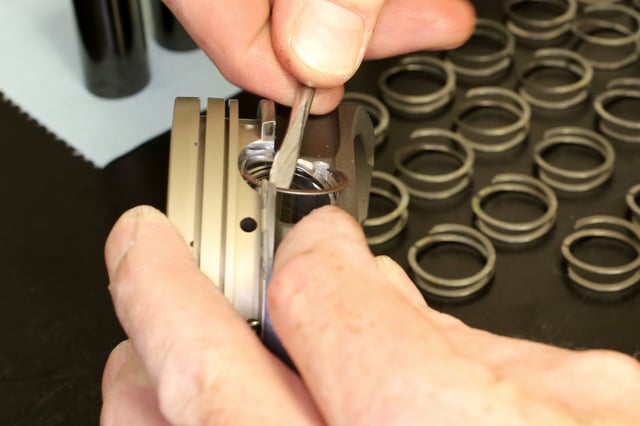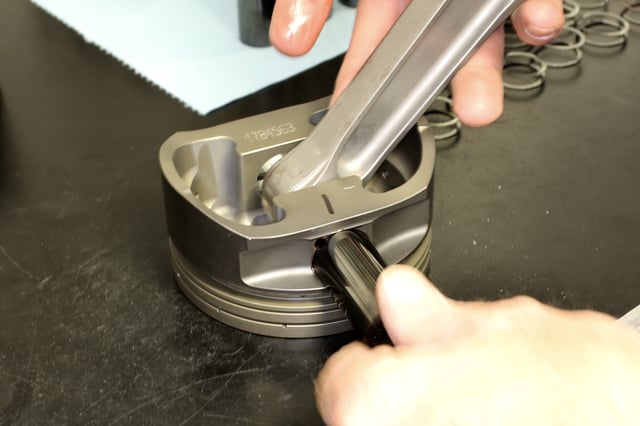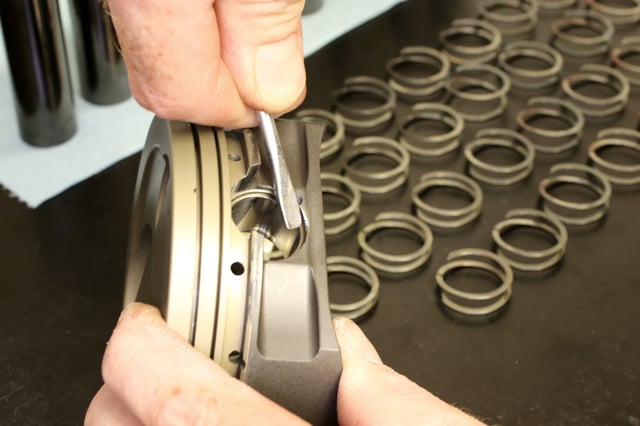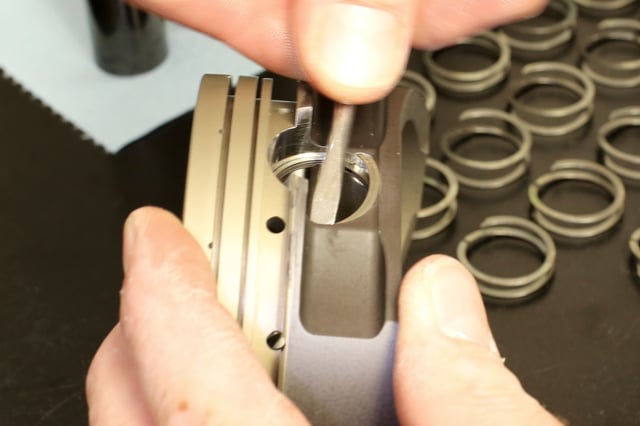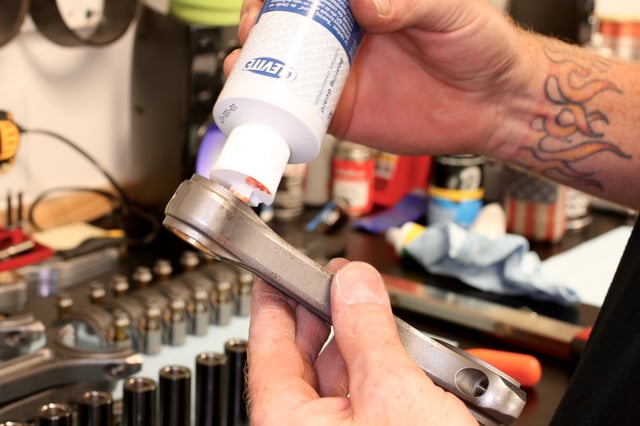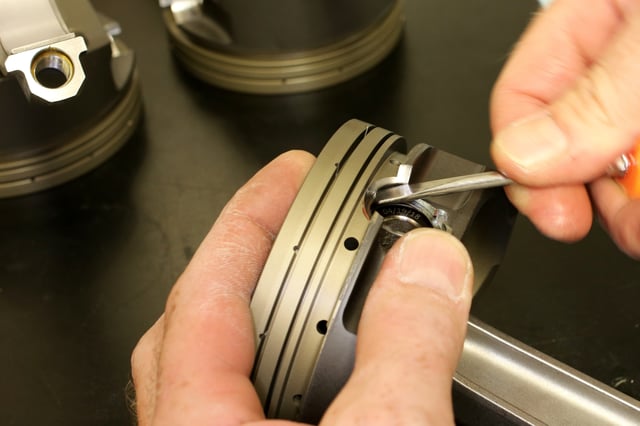Most engine builders have a love/hate relationship with Spirolox. However, with a few tricks, they install easily. Here's how to do it.
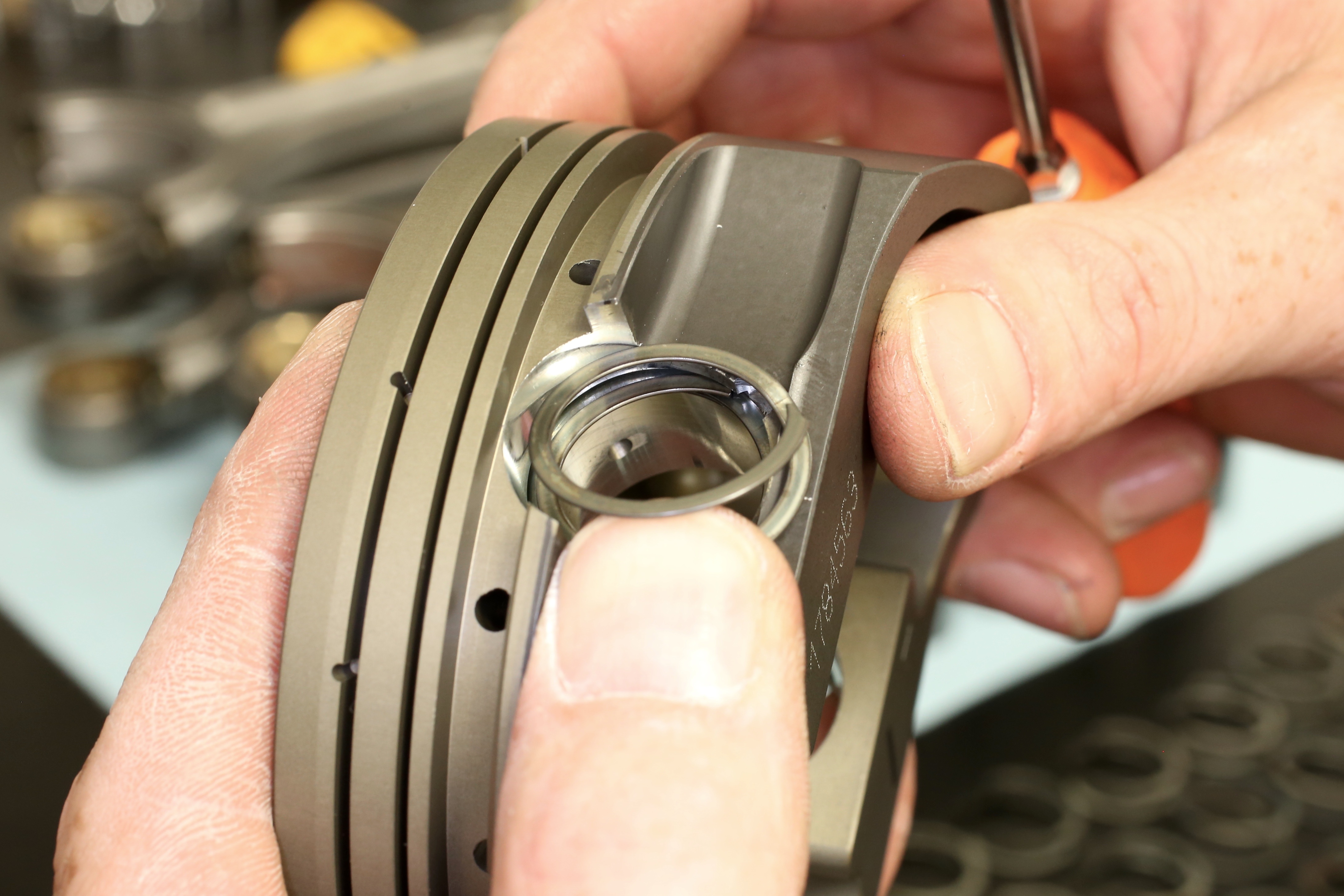
While there are numerous methods of securing the piston and wrist pin to the connecting rod, a double dose of Spirolox on each side of the pin is one of the most popular for high-performance and racing engines.
Pin locks, which Spirolox are a type of, are necessary on pistons with full-floating wrist pins. With this design, the pin pivots freely within the little end of the connecting rod and the two pin bosses on the piston. The pin must be held in check between the pin bosses to keep it from shifting around and scratching the cylinder wall.
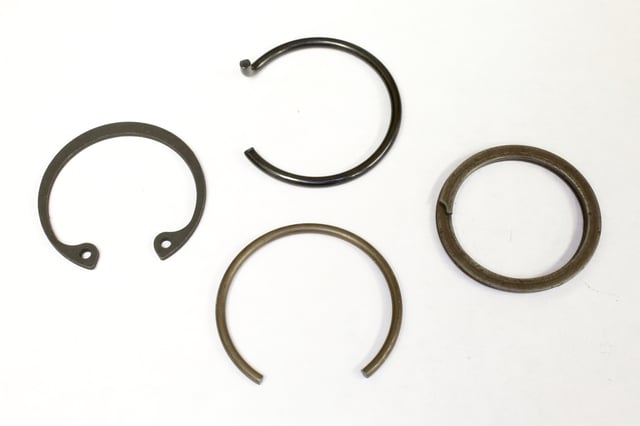
Spirolox are preferred by many engine builders due to their low cost and very effective operation. They’re heat treated, hardened and available in two sizes.
On the downside, Spirolox have sharp edges and there is a learning curve on installing them properly and quickly. High-performance applications usually require two Spirolox on each side of the wrist pin, which doubles the installation time. On the upside, when an engine builder develops a personal style for installing the clips, the job goes very quickly.
Engine builders have used dental tools, jeweler’s screwdrivers and other tricks to speed up the process. Perhaps the simplest method relies on fingers and small screwdriver, as demonstrated by John Himley of CNC Motorsports in Brookings, South Dakota. It took Himley less than 10 minutes to attach dual Sprilox on each side of eight Diamond pistons once all the components were prepped and organized in the assembly room.
Part of the preparation includes checking the retaining grooves to make sure they're clean and free of grit or metal flashings. Also, make sure you are aware of the proper orientation of the piston and rod. You don’t want to pull them all apart after realizing the rod chamfer doesn’t face the fillet radius on the crankshaft when the piston is installed into the cylinder, or that a valve relief is in the wrong place!
Follow along for more tips and tricks on using Spirolox with Diamond pistons. And a final note wrist-pin locks are inexpensive and it is always advisable to replace them during a rebuild!


